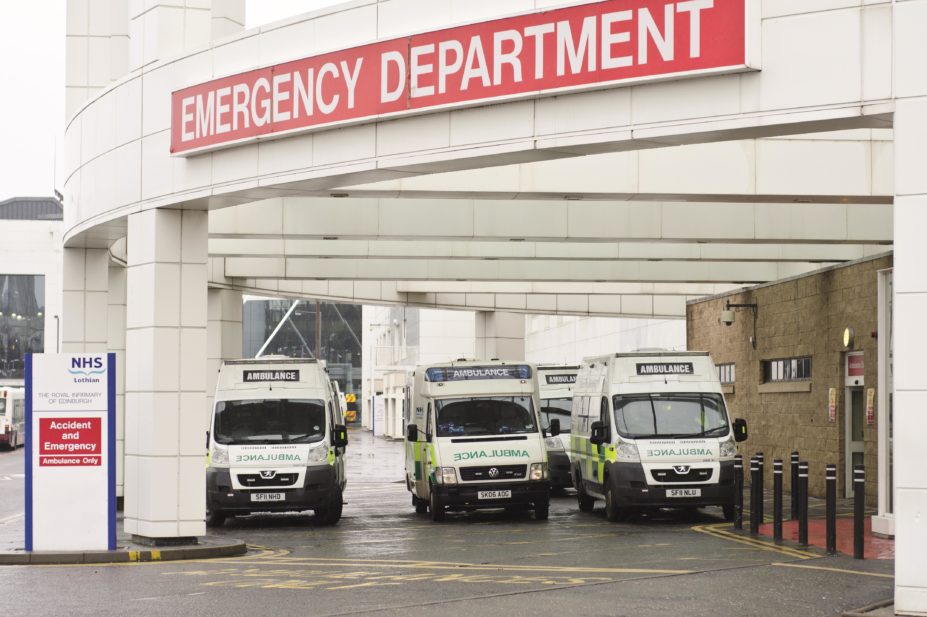
Brendan Howard / Shutterstock.com
A campaign to promote greater use of pharmacists to relieve mounting pressures on urgent and emergency NHS services has been launched by the English Pharmacy Board (EPB) of the Royal Pharmaceutical Society (RPS).
It calls for pharmacists to be placed in A&E departments across England to reduce the burden on over-stretched services, particularly when pressures increase during winter.
Commissioners will also be encouraged to introduce a national minor ailment service so that appropriate urgent care cases can be seen at community pharmacies instead of A&E.
EPB board members approved the plan at a meeting at the RPS headquarters in London on 9 October 2014.
Details of the campaign are still being finalised and the RPS plans to accumulate further evidence of the proposals’ benefits to patients and the NHS.
It is likely to run over the next few months, coinciding with the busy winter period for the NHS. The campaign will target commissioners, policymakers and politicians, culminating in a public-facing awareness drive. Dedicated resources will be developed for the RPS website, and local practice forum events may be used to spread the message.
The campaign follows warnings from Sir Bruce Keogh’s Urgent and Emergency Care Review about the sustainability of emergency services, which stated that attendances at hospital A&E departments have increased by more than two million over the past decade to 16 million[1]
.
Staffing levels are particularly concerning. A 2013 Health Committee report said only 17% of emergency departments in England were managing to provide 16 hours of consultant coverage per day during the working week, the level recommended by the College of Emergency Medicine[2]
.
The EPB campaign wants to improve awareness of the role that pharmacists can have in helping to manage the demands on urgent care services, so that their use becomes standard practice in the NHS.
The draft proposals call for “a commitment from local commissioners to consider the role of pharmacists in A&E over the next six months”. The RPS says this could reduce waiting times and improve care by triaging patients with medicines-related issues.
The campaign will also call for a national common ailments service, or equivalent services commissioned locally, supported by a national service specification. “This will support efficient delivery of local NHS 111 services,” according to draft RPS plans.
Allowing NHS 111 to direct some patients with urgent care needs to local pharmacies would reduce the numbers visiting A&E for minor ailments that could have been seen in the community, the campaign will say.
The EPB is currently building an evidence base that includes findings from a survey of pharmacists in urgent and emergency care. This will assess how many pharmacists are involved in urgent care at present and highlight innovation in the area.
For instance,
The Pharmaceutical Journal
reported on how 70 pharmacists in the West Midlands were being trained to manage patients in emergency departments. Results from phase 2 of a study on the initiative suggested these pharmacists could handle up to 60% of patients attending A&E.
Sid Dajani, RPS treasurer, told the board that the campaign’s initiatives would reduce the burden on GPs, save the NHS money and reduce the number of people attending A&E to obtain free prescriptions on weekends.
“More importantly than that, we can go towards that £20bn [efficiency] savings … now they [hospitals] can put their money into emergency services, nurses and hip operations and so on,” he said. “It’s not about what we can do, our expertise, but how we can be of more value to our patients and the NHS in that respect.”
The RPS plans to meet with Keith Willett, NHS England’s director for acute episodes of care, to discuss the aims of the campaign.
Willett is one of the leads for Sir Bruce’s review, which backed greater use of the “untapped potential” of the pharmacy workforce. The review was established in January 2013 in response to concerns about the long-term viability of services in their current form. Improving the responsiveness of community urgent care services to reduce the need for patients to attend A&E was a key theme.
The board also approved its business plan for 2015, which included preliminary details of five new campaigns. These align with five recently published position statements from the RPS.
The urgent care initiative marks the start of a new approach to the board’s campaigning on behalf of members in England, which will now focus efforts on a single large campaign at a time.
These are: improving urgent and emergency care through better use of pharmacists; pharmacist-led care for people with long-term conditions; pharmacists and GP surgeries; pharmacists’ role in improving care in care homes; and pharmacists’ access to the patient health record.
“What we’re seeing here are the benefits of identifying a campaign,” said EPB board chairman Dave Branford. “We’re not just endorsing the business plan, but also a new way of working.”
References
[1] NHS England. High quality care for all, now and for future generations: Transforming urgent and emergency care services in England - Urgent and Emergency Care Review End of Phase 1 Report. November 2013
[2] House of Commons Health Committee. Urgent and emergency services: Second report of session. London TSO July 2013.


